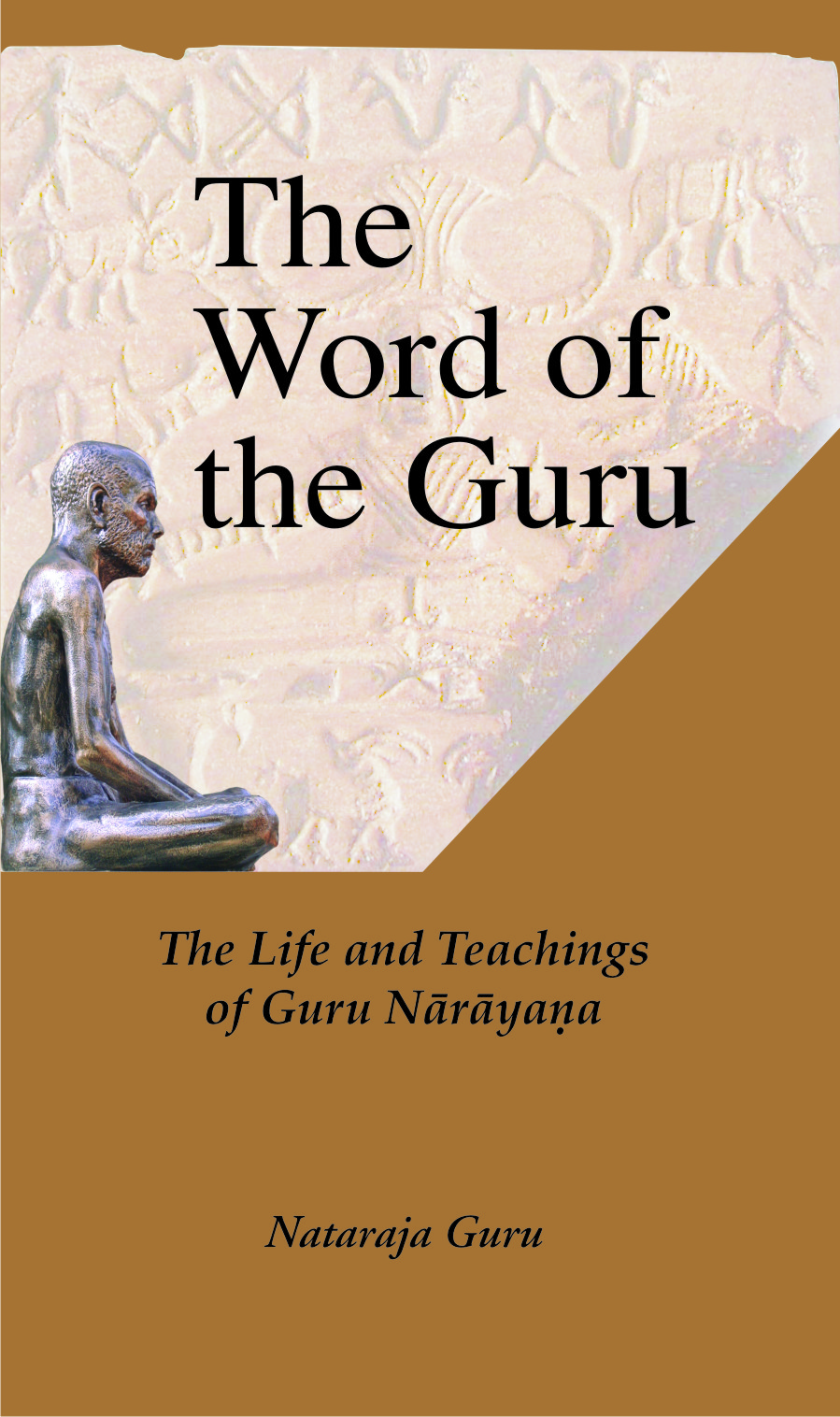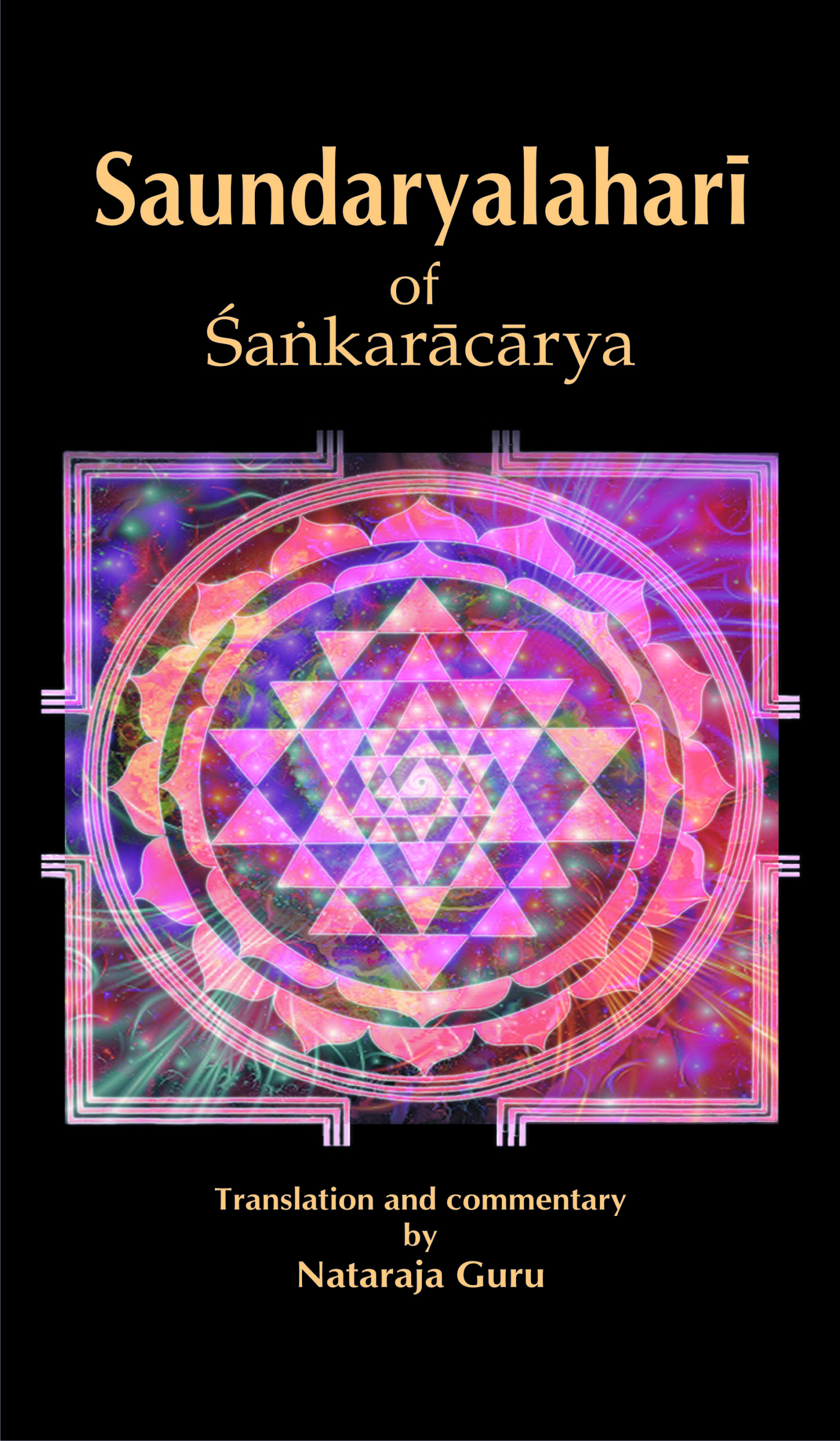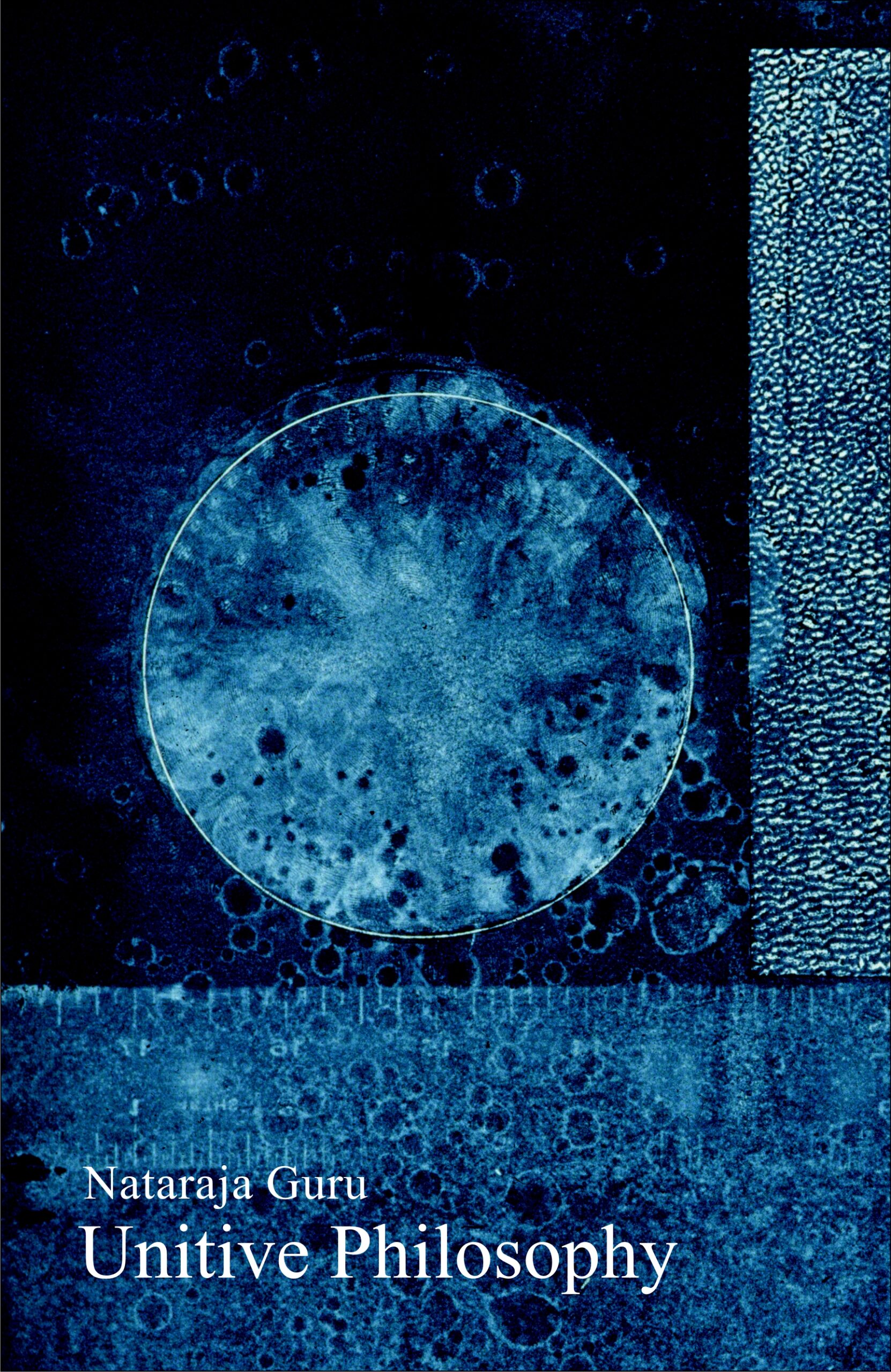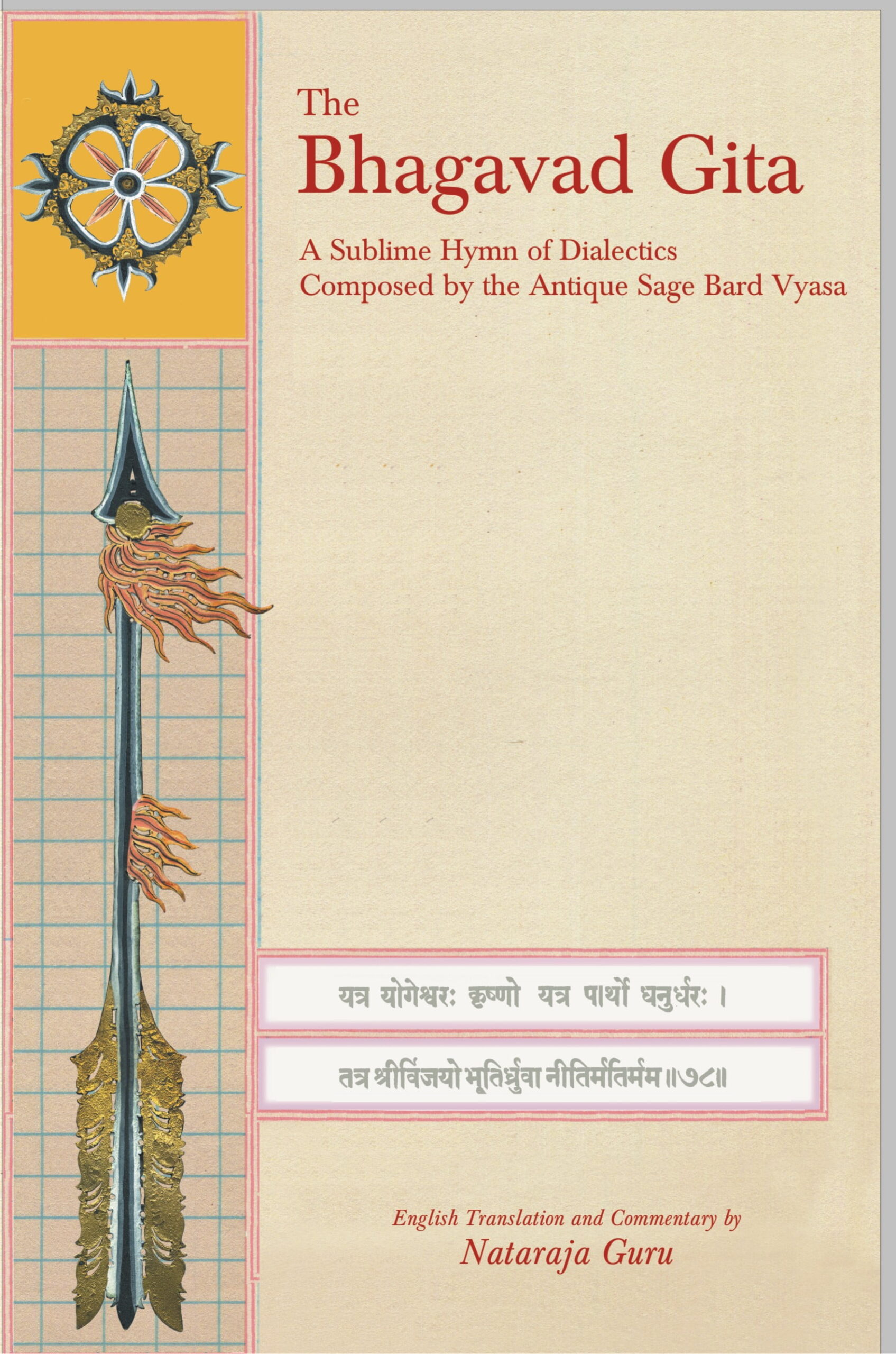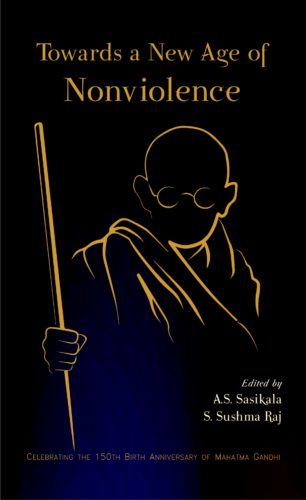-


An Intergrated Scien...
An Intergrated Science of the Absolute (2 Vols. Set)
by: Nataraja GuruIt is not just the magnum opus, but a truly monumental effort of a scientist-philosopher who has spent a whole lifetime to formulate a unitive science, wherein all disciplines of human questing could find a common ground a science where modern science and ancient spiritual wisdom could meet and merge like two opposite poles of a magnet. As a direct disciple of one of the great rishis of the modern age, Nataraja Guru discovers this common ground in Brahma-vidya?, which he calls the Integrated Science of the Absolute, and which has, at its base, his Gurus Dars?ana Ma?la?.
A string of hundred Sanskrit verses, composed by the mystic-poet, Narayana Guru (18541928), the Dars?ana Ma?la? is the very epitome of all visions of truth inspired by his remarkable acquisitions of Upanis?adic thought and, yet far more, by his own tapas (mystical discipline). Reproducing these highly significative verses in Roman script, along with English translations, word meanings, and extensive commentaries, Nataraja Guru not only spells out his mentors Visions of the Absolute in contemporary idiom, but also shows how these visions are fully validated by modern science.
Eclectic synthesis of varied scientific disciplines into a systematic whole is not all that Nataraja Guru accomplishes here. Rather, his book (now in third edition) is an attempt to reintroduce Brahma-vidya? as the one Master Science that embraces every branch of science, every human interest.
₹2,700.00
ISBN: 9788124610572
Year Of Publication: 2020
Edition: 3rd
Pages : lii, 1184
Language : English
Binding : Hardcover
Publisher: D.K. Printworld Pvt. Ltd.
Size: 23
Weight: 2294
It is not just the magnum opus, but a truly monumental effort of a scientist-philosopher who has spent a whole lifetime to formulate a unitive science, wherein all disciplines of human questing could find a common ground a science where modern science and ancient spiritual wisdom could meet and merge like two opposite poles of a magnet. As a direct disciple of one of the great rishis of the modern age, Nataraja Guru discovers this common ground in Brahma-vidya, which he calls the Integrated Science of the Absolute, and which has, at its base, his Gurus Dars?ana Mala.
A string of hundred Sanskrit verses, composed by the mystic-poet, Narayana Guru (18541928), the Darsana Mala is the very epitome of all visions of truth inspired by his remarkable acquisitions of Upanisadic thought and, yet far more, by his own tapas (mystical discipline). Reproducing these highly significative verses in Roman script, along with English translations, word meanings, and extensive commentaries, Nataraja Guru not only spells out his mentors Visions of the Absolute in contemporary idiom, but also shows how these visions are fully validated by modern science.
Eclectic synthesis of varied scientific disciplines into a systematic whole is not all that Nataraja Guru accomplishes here. Rather, his book (now in third edition) is an attempt to reintroduce Brahma-vidya as the one Master Science that embraces every branch of science, every human interest.
Volume-1 Foreword
Foreword to the Third Edition
Preface
VOLUME ONE
PRELIMINARIES
1. The Notion of the Absolute
2. United Science Knows No Frontier
3. The Structural Unity of Thought
4. Laboratory Knowledge vs Seminary Wisdom
5. Concepts and Percepts at Loggerheads
6. The Axiomatic Origin of Possible Truth
7. The `Subject-Matter’ and `Object-Matter’ of This Work
8. The Status, Content and Scope of the Absolute
9. The Term `Absolute’ Widely Used by Scientists
10. Dialectical Implications of the Content of the Absolute
11. The Dialectical Approach to the Notion of the
Absolute
12. Dialectical Methodology
13. Certitude Resides at the Core of Consciousness
14. Further Light on the Scope and Limitations
of This Science
An Integrated Science of the Absolute
15. Contributions of Vedānta Epistemology
16. The Scientific Certitude Claimed in This Work
17. Normalization and Neutralization of Scientific
Thinking
18. The Gap between Experimental and A Priori
Thinking
19. Experience and Experiment Have to
Interpenetrate to Reveal the Absolute
20. Would Not This Twofold Effort Make Us
Relive the Absolute?
21. Possibilities and Probabilities Meet in the
Matrix of Relation–Relata
22. The Dialectical and Structural Relationship
between Man and Machine
23. Semantic Polyvalence of the Word and Its
Meaning
24. Steps from Logic to Dialectic
25. Mathematics Reveals the Possibilities of a Science
of the Absolute
(i) The Mathematical Frame of Reference
(ii) The Delights and Puzzles of Mathematics
(iii) Mathematics Falls Short of the Absolute
26. The Possibility of Structural Analysis Inside
the World of Discourse
27. Bergson`s Own Structural Prognostics
28. A Structural Model with Absolute Status
Already in Use
29. Great Possibilities of Inter-Disciplinary
Structuralism
30. The Plan of This Work
1. COSMOLOGY
Prologue
1. Inner and Outer Compatibilities
2. The Common Parameter Passing through
Cosmogony and Cosmology
3. Merits of Mathematical Language
4. The Prologue and Epilogue of Each Chapter
Distinguished
Translation and Commentary
Darśana-Mālā: Chapter 1
Adhyāropa-Darśanam (Vision by Supposition)
Epilogue
1. Speculation vs Observation
2. Some Interesting Modern Views in Cosmogony
3. Cosmogony in R̥gveda
4. Cosmogony in the Bible
5. The Interchangeability and Homogeneity of
Dialectical Counterparts
6. Evolutionary Cosmological Processes
7. Evolution in Terms of Consciousness
8. The Place of Evolution in a Normalized Context
9. Concluding Remarks
2. METHODOLOGY
Prologue
1. Methodology and Structuralism
2. Further Implications of Cartesianism
3. Directing Human Understanding
4. The Status of the Horizontal Reference
5. A New Way in Physics
6. Relative and Absolute Time
7. Bergson`s Five Objections to Relativity
8. Bergson`s Objections Examined
9. Bergson`s First Objection
10. Bergson`s Second Objection
11. Bergson`s Third Objection
12. Bergson`s Fourth Objection
13. The Plurality of Times
14. Bergson`s Fifth Objection
15. The Figures of Light
16. The Space–Time of Four Dimensions
17. The Time of the Restricted Theory of Relativity
and the Space of the General Theory of Relativity
18. Axiomatic Physics
Translation and Commentary
Dar÷ana-Màlà: Chapter 2
Apavàda-Dar÷anam (Vision of Non-Supposition)
Epilogue
1. New Methodological Perspectives
2. Demi-Relativity, Completer Correlations,
Fuller Reciprocity, Time–Space Continuum,
and Their Unity
3. The Epistemological and Methodological
Context of this Chapter
4. A New Mathematical Language
5. Structure More Compactly Conceived
6. Ascending and Descending Movement in
Reasoning
7. The Transition from the Relative to the Absolute
8. The Analytical Approach
9. Concluding Remarks
3. PHENOMENOLOGY
Prologue
1. Conversant about the Mind
2. Two Sets of Antitheses Involved
3. The Noema and Noetic in Phenomenology
4. The Idea of Process and Phenomenological
3.Dynamism
5. Varieties and Interrelations
6. The Structure of Truth and Falsehood
7. Phenomenological Ontology
8. The Religious Aspect
Translation and Commentary
Darśana-Mālā: Chapter 3
Asatya-Darśanam (Vision of Non-existence)
Epilogue
1. The Epistemological Status of this Chapter
2. The Colour Solid and the Universal Concrete
3. Absolutist Reduction
4. Somes of Structural Importance
5. Two Grades of Eidetic Reciprocity
6. Phenomenological Echoes in the Upaniṣads
(i) The Unborn Female
(ii) The Thunderbolt Principle
(iii) Phenomenological Monads
(iv) The Enigma of the Inverted Cup
7. Concluding Remarks
4. NEGATIVITY
Prologue
1. The Negativity of Kant and German Idealism
Contents
An Integrated Science of the Absolute
2. Schelling`s More Normative Position
3. A Description of Māyā
4. Wrong Perspectives about Māyā
5. Paradox and the Absolute
6. Scientific Philosophy
7. The Opposition to Māyā
8. The Contrary and the Contradictory
9. The Gap between Ontology and Teleology
Translation and Commentary
Darśana-Mālā: Chapter 4
Māyā-Darśanam (Vision of Negation)
Epilogue
1. A Schematic Definition of Māyā
2. The Dynamism of Māyā
3. The Subtle Limbs of the Transcendental Māyā
Factor
4. The Concrete Universal within Māyā
5. The Basis of Ambiguity and Paradox
6. Pradhāna and Prakl̃ti
7. Orthodoxy and the Revaluation of the
Sāṁkhya Philosophy by the Bhagavadgītā
8. Upaniṣadic References to Pradhāna and Other
Sāṁkhya Terms
9. From Non-existence to the Atom
10. The Dynamism of Mind–Matter Interaction
11. The Machine Analogy
12. Concluding Remarks
5. NORMALIZATION
Prologue
1. Mathematical and Mystical Language
2. Epistemological Revision of Science
3. The Structure of Intuitionist Mathematics
4. The Perceptual and Mathematical Realities
of Relativity
5. Elimination of Unnecessary Structural Aspects
6. Bergson`s Revaluation of Einstein
7. The Fourfold Aspects of Bergson`s Revaluation
8. Structuralism in the Māṇḍūkya Upaniṣad
9. Double Correction and Scientific Certitude
10. Mathematical and Scientific Structuralism
11. The Total Speculative Ground Revealed by
Structuralism
12. Structuralism Implied in Śaṅkara
(i) Jugglers
(ii) The Umbrella-Men
(iii) Mendicants and Brahmins
(iv) The Falcon
(v) Parrots and Cages
Translation and Commentary
Darśana-Mālā: Chapter 5
Bhāna-Darśanam (Vision of Consciousness)
Epilogue
1. Imponderable Substantiality
2. The Refined World of Electromagnetics
3. The Visual and Auditory Function of Pure Matter
4. A Unit Notion of Thinking Substance
5. The High Dignity of the Fourth State
6. The Logical Frame or Structure
7. Complex Numbers and Physics
8. The Non-dual Self
Contents
An Integrated Science of the Absolute
9. Concluding Remarks
Bibliography
General Index
Index of Names
Index of Sanskrit Terms ,
Volume-2 VOLUME TWO
INTRODUCTION
1. The Three Steps in a Complete Philosophy
2. The Twofold Universe of Values
3. Dilectical Revaluation
4. Contemplative Orientation
5. Arivu (Knowledge): The Epistemology of Gnosis
6. Structural Implications of Prayer
7. Daiva-Daśakam
8. Some Structural Impossibilities
9. A Finer Circulation of Values
10. Axiology in Greek Drama
11. The Self as an Organon
12. One Absolute Substance
13. Dissolving the Paradox
14. The Structural Pattern Emerging to View
15. Two Ways of Approaching the Absolute
16. A Running Review of the Six Darśanas
(a) The Nyāya Philosophy of Gautama
(i) Structural Features of the Nyāya Philosophy
(ii) The Fourfold Correlates
(b) Vaiśeṣika Philosophy of Kaṇāda
vi An Integrated Science of the Absolute
(i) Two Sets of Categories
(ii) The Units of Ultimate Existence
(iii) The Soul and Salvation
(c) The Sāṁkhya Philosophy of Kapila
(i) Dynamism of the Three Nature Modalities
(ii) Kapila: The first-Known Sāṁkhya Philosopher
(iii) Schematic Implications
(d) The Yoga of Patañjali
(e) The Mīmāṁsās of Jaimini and Bādarāyaṇa
(i) Semantics and Logical Form in the Mīmāṁsā
(ii) Brute Vedism Dialectically Revalued
(iii) From the Roaring Bull to Pure Semiosis
(iv) The Structure of the Eternal Word-Sound
(v) The Complementarity of the Mīmāṁsās
(vi) The Vedānta of Bādarāyaṇa
(vii) Vedānta Confined to Brahmasūtra
(f) A Critical Appraisal of the Brahmasūtra
and Vedānta in General
(g) General or Greater Vedānta
17. Brahmavidyā Pañcakam
18. Municaryā Pañcakam 148
19. Higher Criticism and Mysticism
20. Definition of Mysticism
6. INSTRUMENTALISM
Prologue 161
1. The Workings of Instrumental Mysticism
2. Integration of Mystical Expressions
3. Parity between Instrument and Action
4. Normal and Abnormal Mysticism
(a) Nature Mysticism
(b) The Mysticism of Action
(c) Mysticism of Agony
(d) Philosophic Mysticism
(e) The Mysticism of the Sūfīs
Translation and Commentary
Darśana-Mālā: Chapter 6
Karma-Darśanam (Vision of Action)
Epilogue
1. The Certitude in This Chapter
2. The Type of Action in This Chapter
3. Functional Units of Activity
4. Transcending Action
5. Absolutist Mystical Expressions
6. Anukampā Daśakam
7. Jīvakāruṇya Pañcakam
8. Concluding Remarks
7. AWARENESS
Prologue
1. Apodictic, Dialectic, and Intermediary Certitude
2. The Correct Position of Pure Reason
3. Kant’s Critique of Pure Reason
4. The Non-Dialectical Logic of This Chapter
5. Fourfold Absurdities of Non-normalized Reason
6. The Claims of the Axiomatic and the Dialectical
7. The Togetherness of Thought in Pure Reason
Translation and Commentary
Darśana-Mālā: Chapter 7
Jñāna-Darśanam (Vision by Awareness or Reason)
Epilogue
1. The Elements of Awareness
2. From Uncertainty to Certitude
3. From the Psychological to the Logical Self
4. The Importance of Verse Five
5. Certitude by General Awareness
6. The Teleological Pole of Logic
7. Concluding Remarks
8. CONTEMPLATION
Prologue
1. Complementarity, Reciprocity, and Parity
2. The Dynamics of Contemplative Life
3. The Fundamentals of Ethics and Aesthetics
4. Eastern and Western Norms for a Good Life
5. Democracy and Citizenship
6. The City of God
7. Self-contemplation as a Value
8. Religious Expressions of Self-contemplation
Translation and Commentary
Darśana-Mālā: Chapter 8
Bhakti-Darśanam (Vision by Contemplation)
Epilogue
1. Bhakti in Bhagavadgītā
2. Absolutist Ethics and Aesthetics
3. The Coherence of This Chapter
4. The Components of Normal Contemplative Value
5. Three Modern Indian Contemplative Mystics
6. Concluding Remarks
9. MEDITATION
Prologue
1. The Interacting Counterparts
2. Three Components of Yoga
3. Sublimation of Instinctive Dispositions
4. The Mysterious Linking Power
5. A Unified Treatment of Yoga
6. The Inner Factor Involved in Meditation
7. Western Interest in Yoga
Translation and Commentary
Darśana-Mālā: Chapter 9
Yoga-Darśanam (Vision of Meditation)
Epilogue
1. Perfect Participation in Yoga
2. Some Original Features of the Yoga of the Upaniṣads
3. Structural Implications and the Categories of Patañjali
4. Concluding Remarks
10. ABSORPTION
Prologue
1. The Scope of Nirvāṇa
2. A Definition of Nirvāṇa
3. Grades and Degrees of Perfection and Purity
4. The Principle of Compensation
5. The Equilibrium of a Twofold and Double Correction
6. Vedānta and Western Thought
7. Further Eschatological Considerations
Translation and Commentary
Darśana-Mālā: Chapter 10
Nirvāṇa-Darśanam (Vision by Absorption)
Epilogue
1. The Two Brahmans Involved in Every State of Nirvāṇa
2. Positive and Negative Limiting Types
3. A Normalized Version of Nirvāṇa
4. The Nirvāṇa that Is One Degree Superior
5. Other Precious Eschatological Indications
i. The Seven Bhūmikas of Yogavāsiṣṭha
ii. Reincarnation
iii. Reincarnation of Evil-doers
iv. Hereditary Birth by Jātī (Caste)
v. Transcending Birth and Rebirth
vi. Concluding Remarks
MAIN CONCLUSIONS
1. A Retrospective Review
2. A Word in Self-Defence
3. Advaita Dīpikā (The Lamp of Non-Duality)
4. Some Additional Explanations
Appendix
Bibliography
General Index
Index of Names
Index of Sanskrit Terms

